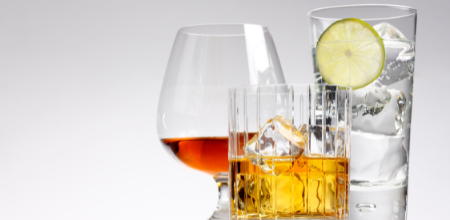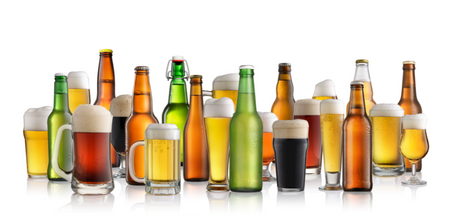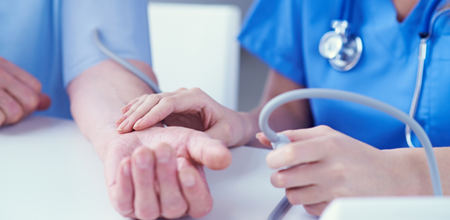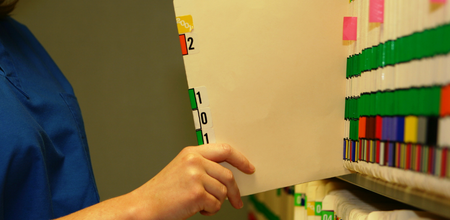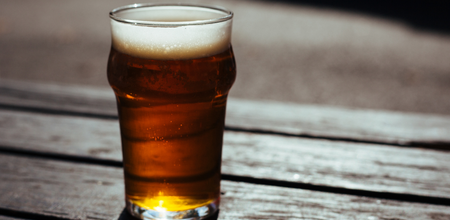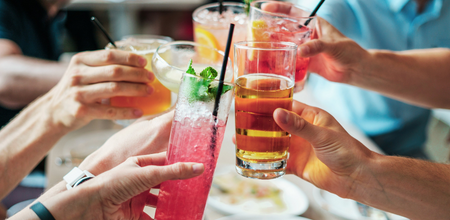Alcohol Drinking Habits
Before and After Traumatic Brain Injury
Categories: Substance Abuse
How does alcohol use before traumatic brain injury compare with usage after injury for individuals with traumatic brain injuries?
Past Studies
Past Studies have determined that individuals with traumatic brain injury frequently have a history of chronic alcohol problems. Frequently, individuals are intoxicated at the time of their injury, and this appears to hinder their recovery. Drinking alcohol within the first year after traumatic brain injury is also believed to interfere with recovery. Research is lacking about alcohol use after traumatic brain injury, especially comparing before injury and after injury drinking habits.
This Study
This Study included 197 hospitalized adults with a broad range of traumatic brain injury severity. The participants were interviewed about their alcohol drinking habits at one month and at one year after their traumatic brain injuries. Their alcohol use was measured in terms of how many drinks they had at a typical sitting and how many sittings they had in a typical week. The participants were also asked about the occurrence of alcohol related problems in their lives, such as getting into trouble at work because of drinking. In this study, heavy drinking is defined as consuming at least 1 to 2 drinks 7 to 9 times per week or at least 5 to 6 drinks per occasion, regardless of how often.
The researchers found that overall drinking and alcohol related problems decreased from before injury to one year after injury. Fourteen percent of participants did not drink alcohol before their brain injuries and 36% reported they did not drink at one year from their injury. Before their brain injuries, 64% of the participants reported that they experienced no alcohol-related problems and 84% stated the same one-year after their brain injury. Seventy-two percent of those with heavy drinking or alcohol related problems before injury did not drink alcohol or drank without significant problems one year after their injury date.
Participants who reported a history of major alcohol related problems were 10 times more likely than those without such a history to report major alcohol related problems one year after their injury. About 25% of the participants reported heavy drinking, significant alcohol related problems, or both within one year after their brain injury. Only 7% who did not drink or had normal drinking habits before brain injury reported moderate to heavy drinking or significant problems with alcohol one year after their injury.
Who May Be Affected By These Findings
Individuals with brain injuries, their families and friends, caregivers, healthcare providers, researchers
Caveats
This study’s data consists of brief self-reported responses by participants. There is no way of knowing if the self-reported behavior actually reflects the real situation. This study is also limited in that the researchers did not use formal diagnostic tests for alcohol abuse or dependence. Furthermore, 45% of the participants in this study were also participating in another study in which they were instructed not to drink alcohol. It is not known how the instruction not to drink alcohol for the other study effected their behavior in this study.
This study only examined drinking habits for one year after the traumatic brain injury. Future studies should evaluate drinking habits for a longer period of time to allow for the “on-again/off-again” nature of heavy alcohol use and to discover the triggers for alcohol use after traumatic brain injury.
Bottom Line
The researchers found that overall drinking and alcohol related problems decreased from before injury to one year after injury. Overall, about 25% of the participants reported heavy drinking, significant alcohol related problems, or both one-year after their traumatic brain injuries. Participants who reported a history of major alcohol related problems were 10 times more likely than those without such a history to report major alcohol related problems one year after their injury. The researchers hope that if high-risk individuals are identified, they can become the focus of prevention/intervention efforts.
Please take a moment to comment on the value of this abstract:
Click here to take a brief survey
Find This Study
Bombardier, C. H., Temkin, N. R., Machamer, J., & Dikmen, S. S. (2003). The natural history of drinking and alcohol-related problems after traumatic brain injury. Archives of Physical Medicine Rehabilitation, 85, 185-191.

